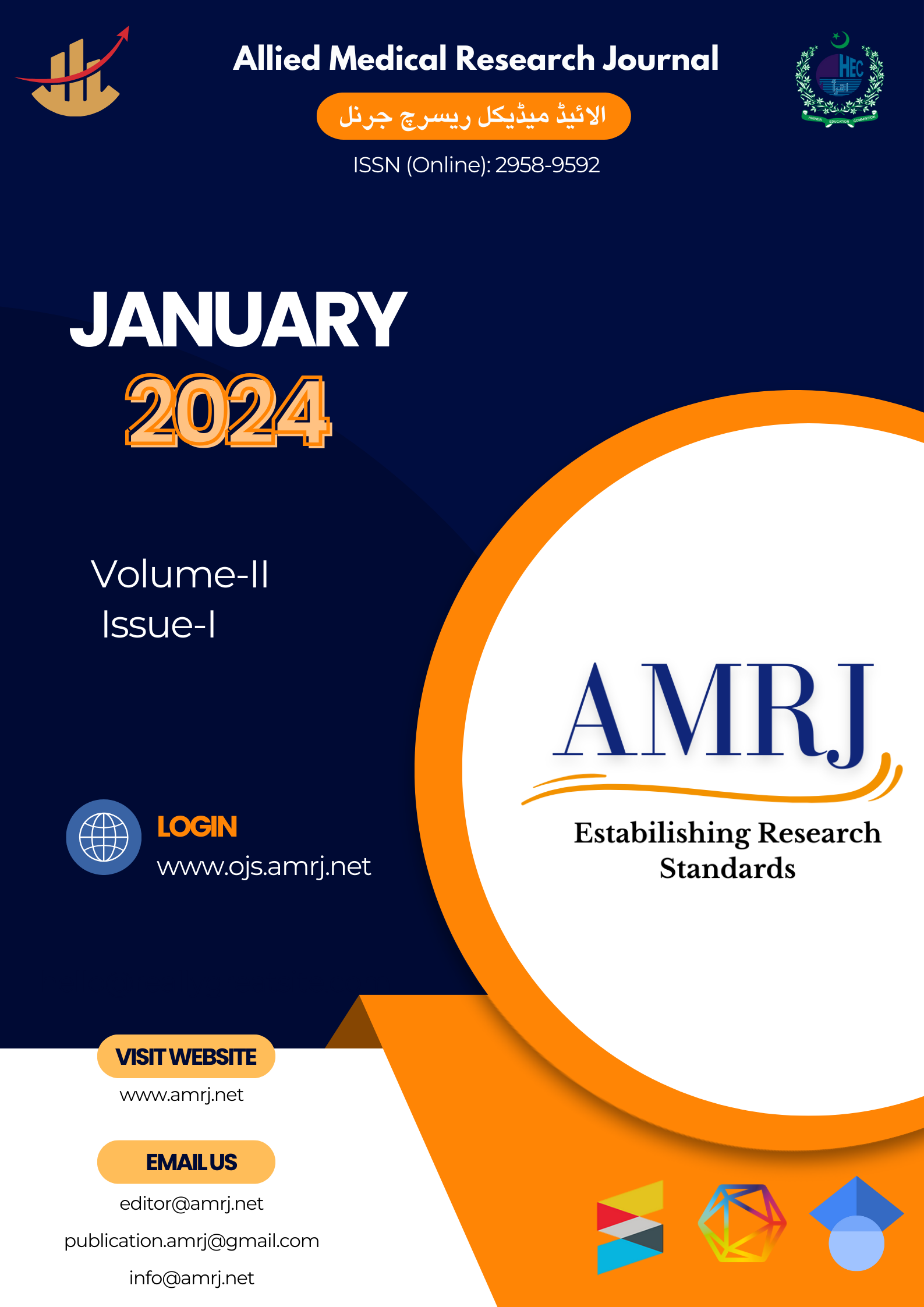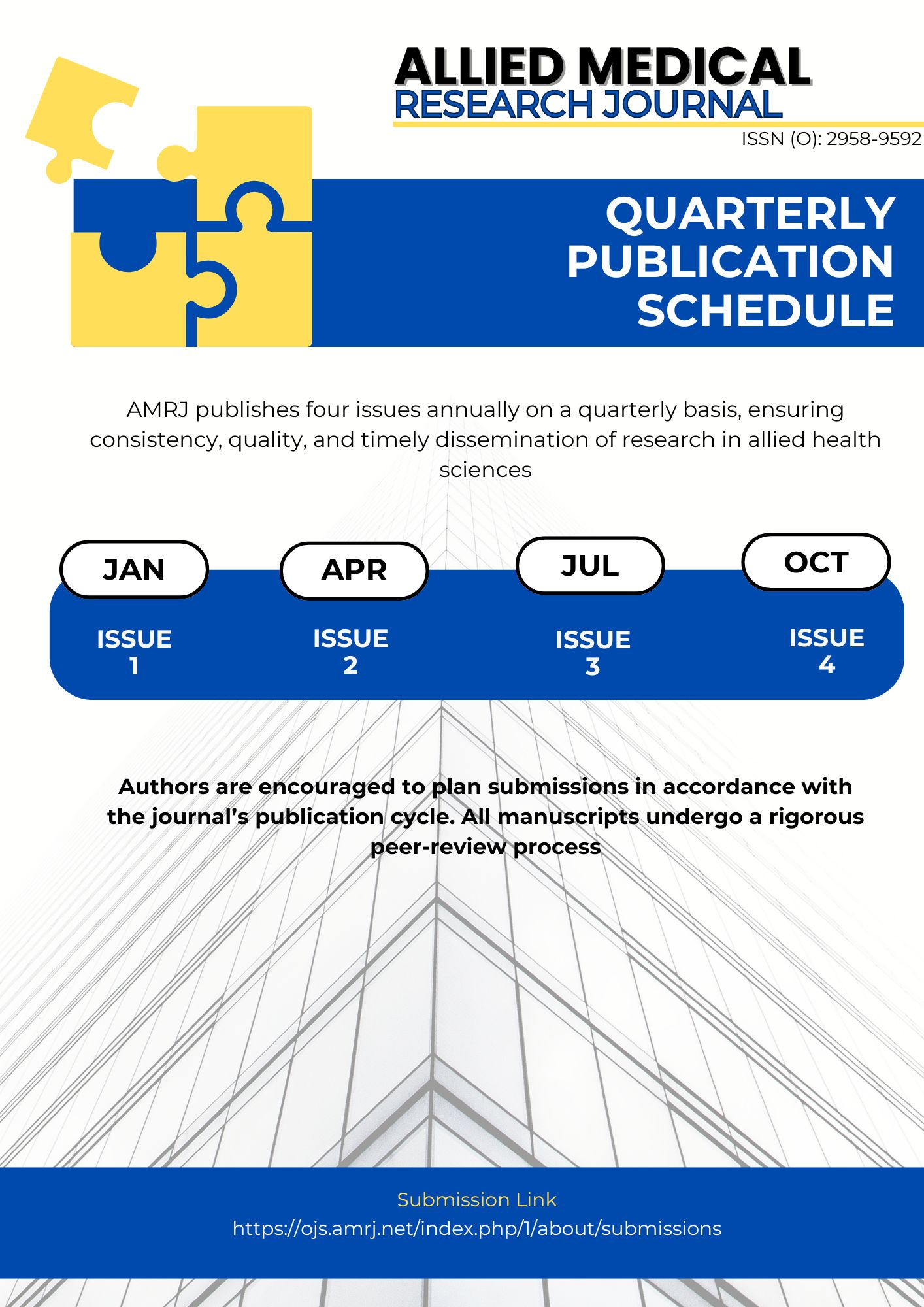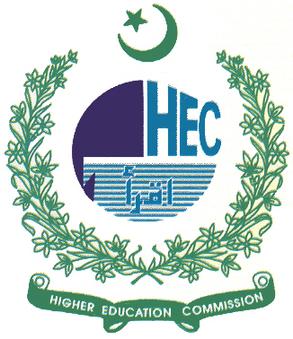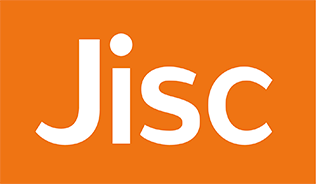Examining the benefits of multidisciplinary rehabilitation intervention for stroke patients
Multidisciplinary Rehab in Stroke Patients
Keywords:
Physical Therapy, Occupational Therapy, Post-stroke Patients, Speech TherapyAbstract
Background: Stroke is the second leading global cause of death and disability, affecting 80 million survivors with residual symptoms. Rehabilitation, involving an interdisciplinary team approach, plays a crucial role in enhancing functional recovery, addressing deficits in fine motor skills, cognition, and communication through customized therapies, as highlighted in a randomized controlled trial comparing integrated rehabilitation approaches to conventional physical therapy for stroke recovery.
Methods: The study was a randomized controlled trial comparing integrated rehabilitation approaches with conventional rehabilitation in post-stroke patients aged 40-60 years over a four-month period. Conducted in a multidisciplinary rehabilitation center, the study included 90 participants, with 45 in each group. The experimental group received integrated rehabilitation involving tailored physical therapy to enhance balance, occupational therapy targeting fine motor skills, and speech therapy addressing swallowing and communication issues. The control group underwent conventional rehabilitation primarily focusing on physical therapy, omitting integrated approaches like occupational and speech therapy.
Results: The analyses of the findings had revealed that interdisciplinary rehabilitation program yielded a significantly better results p<0.05 in improving patients’ conditions. The findings provided evidences that all outcome measures that were balance, fine motor function and swallowing and dysphagia were significantly improved p<0.05 both at within and between the group analyses after four months of integrated rehabilitation program.
Conclusion: The interdisciplinary rehabilitation programme that included physical, occupational, and speech therapies produced noticeably better outcomes than the conventional rehabilitation methods. The results highlight how well the integrated strategy works to improve swallowing/dysphagia, fine motor function, and balance outcomes.
References
Kim GJ, Parnandi A, Eva S, Schambra H. The use of wearable sensors to assess and treat the upper extremity after stroke: a scoping review. Disability and rehabilitation. 2022 Sep 25;44(20):6119-38.
Vabalaite B, Petruseviciene L, Savickas R, Kubilius R, Ignatavicius P, Lendraitiene E. Effects of high-frequency (HF) repetitive transcranial magnetic stimulation (rTMS) on upper extremity motor function in stroke patients: A systematic review. Medicina. 2021 Nov 7;57(11):1215.
Fong KN, Tang YM, Sie K, Yu AK, Lo CC, Ma YW. Task-specific virtual reality training on hemiparetic upper extremity in patients with stroke. Virtual Reality. 2022 Jun 1:1-2.
Casebier JC. An In Vivo Functional Evaluation, in an Avian Model, of Passive Implantable Designs to Restore Hand Function after Spinal Cord Injury.
Choi W. The effect of task-oriented training on upper-limb function, visual perception, and activities of daily living in acute stroke patients: A pilot study. International Journal of Environmental Research and Public Health. 2022 Mar 8;19(6):3186.
Thant AA, Wanpen S, Nualnetr N, Puntumetakul R, Chatchawan U, Hla KM, Khin MT. Effects of task-oriented training on upper extremity functional performance in patients with sub-acute stroke: a randomized controlled trial. Journal of physical therapy science. 2019;31(1):82-7.
Thanga Barathi G. Effectiveness of Motor Relearning along with Proprioceptive Neuromuscular Facilittation on Improving Functional Mobility in Subjects with Sub Acute Stroke (Doctoral dissertation, Madha College of Physiotherapy, Chennai). 2019
Firoozeh F, Noorizadeh S, Dadgoo M, Islam D, Habibi A. A comparison among Task Oriented Training with and without Bobath program on upper limb in stroke patients. Function and Disability Journal. 2019 Feb 10;2(1):83-90.
Kamel FA, Basha MA. Effects of virtual reality and task-oriented training on hand function and activity performance in pediatric hand burns: a randomized controlled trial. Archives of Physical Medicine and Rehabilitation. 2021 Jun 1;102(6):1059-66.
Kirac-Unal Z, Gencay-Can A, Karaca-Umay E, Cakci FA. The effect of task-oriented electromyography-triggered electrical stimulation of the paretic wrist extensors on upper limb motor function early after stroke: a pilot randomized controlled trial. International Journal of Rehabilitation Research. 2019 Mar 1;42(1):74-81.
Noveletto F, Soares AV, Eichinger FL, Domenech SC, Hounsell MD, Bertemes Filho P. Biomedical serious game system for lower limb motor rehabilitation of hemiparetic stroke patients. IEEE Transactions on Neural Systems and Rehabilitation Engineering. 2020 Apr 16;28(6):1481-7.
Ko EJ, Sung IY, Moon HJ, Yuk JS, Kim HS, Lee NH. Effect of group-task-oriented training on gross and fine motor function, and activities of daily living in children with spastic cerebral palsy. Physical & Occupational Therapy In Pediatrics. 2020 Jan 2;40(1):18-30.
Tauchi Y, Kyougoku M, Takahashi K, Okita Y, Takebayashi T. Dimensionality and item-difficulty hierarchy of the Fugl-Meyer assessment of the upper extremity among Japanese patients who have experienced stroke. Topics in Stroke Rehabilitation. 2022 Nov 17;29(8):579-87.
Lee SH, Jung HY, Yun SJ, Oh BM, Seo HG. Upper extremity rehabilitation using fully immersive virtual reality games with a head mount display: a feasibility study. Pm&r. 2020 Mar;12(3):257-62.
Van Lieshout EM, Mahabier KC, Tuinebreijer WE, Verhofstad MH, Den Hartog D, Bolhuis HW, Bos PK, Bronkhorst MW, Bruijninckx MM, De Haan J, Deenik AR. Rasch analysis of the Disabilities of the Arm, Shoulder and Hand (DASH) instrument in patients with a humeral shaft fracture. Journal of Shoulder and Elbow Surgery. 2020 May 1;29(5):1040-9.
Da Silva PB, Antunes FN, Graef P, Cechetti F, de Souza Pagnussat A. Strength training associated with task-oriented training to enhance upper-limb motor function in elderly patients with mild impairment after stroke: a randomized controlled trial. American journal of physical medicine & rehabilitation. 2015 Jan 1;94(1):11-9.
Moon JH, Jung JH, Hahm SC, Cho HY. The effects of task-oriented training on hand dexterity and strength in children with spastic hemiplegic cerebral palsy: A preliminary study. Journal of physical therapy science. 2017;29(10):1800-2.
Hussain M, Fatima A, Ahmad A, Gilani SA. Effects of task oriented rehabilitation of upper extremity after stroke: A systematic review. J. Pak. Med. Assoc. 2022 Jul 1;72:1406-15.

Downloads
Published
Issue
Section
License
Copyright (c) 2024 Ilsa Waqi Khunsha, Farwa Azmat , Haris Hassan, Affaf Aweem, Sundus Fatima, Faiza Badar, Ayesha Farrukh

This work is licensed under a Creative Commons Attribution-NonCommercial 4.0 International License.








